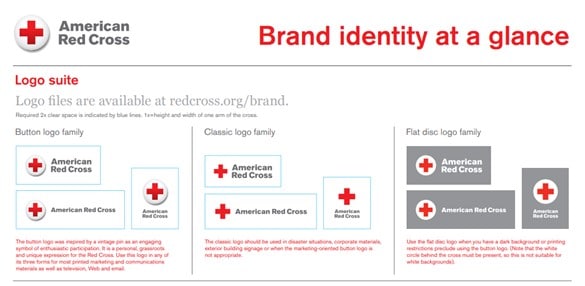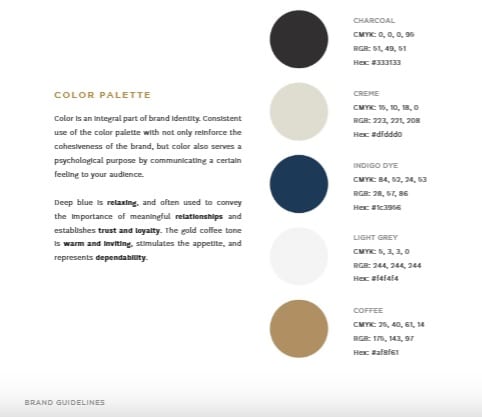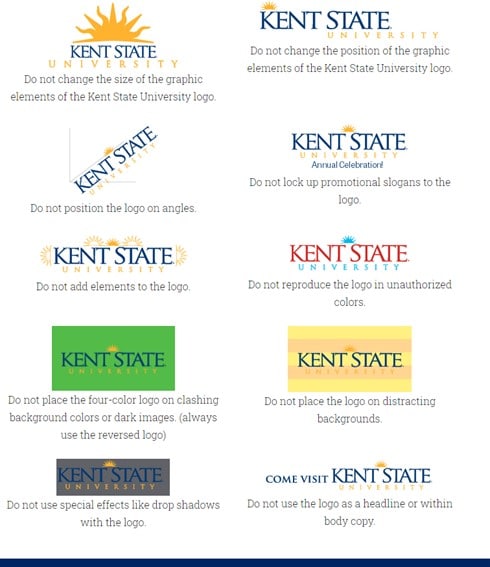
How to Put Your Best Foot Forward with Your Style Guide
HOW TO PUT YOUR BEST FOOT FORWARD WITH YOUR STYLE GUIDE
You may not think fonts, colors, and tone of voice are essential in telling your company or organization’s story, but they are. These items all reflect your brand and serve as important components to distinguish your company and establish customer loyalty.
And there’s nothing better than a style guide to help ensure consistent communications.
Style guides are a reference tool for anyone who touches communications in your organization – whether that person be a writer, social media manager, graphic designer, or frontline employee.
A style guide spells out precisely what communications coming out of your organization should read and look like, no matter how small or large your company may be.
“Style guides are especially important in organizations with multiple locations where content is created locally. As a proud badge-wearing member of the branding police, I’m optimistic that a style guide will eliminate free-form design liberties such as stretching the logo, using other colors because ‘those colors match the image on my flyer’ or fitting the logo bug into shapes like wheels on a car,” says Sally A. Jozwiak, marketing strategist and founder of Jozwiak and Partners.
“If you want standards for consistent and high-quality representation of your brand, a style guide is a must-have asset in the marketing toolkit.”
What to Include
There are several elements you should include in your organization’s style guide. Most style guides contain the following:
Logo usage
A style guide should provide instructions on how to use your company’s logo. It should make crystal clear how to use it and what it should look like on any communications coming out of your organization, whether on letterhead, a T-shirt, PowerPoint, or a business card.
Below is an excellent example of logo usage illustrated in the American Red Cross’ style guide.

Email standards
Have you ever worked at an organization and seen people use inspirational quotes or other sayings in lieu of a standard email signature? Maybe you’re allowing this now and haven’t considered an email signature a vital part of your company’s brand.
Think again.
An email signature plays an essential role in your branding because it communicates a high level of professionalism and provides instant recognition for your company any time it’s used. It is a critical part of your branding and should be included in your style guide.
What should an email signature look like?
Here’s an example to follow from The Writers for Hire:

Font and font sizes
The fonts you use in written correspondence or visual communications play an important role in your organization’s personality.
Your style guide should include all brand fonts acceptable for headings, paragraphs, and their respective uses. This includes everything from PowerPoint presentations to the fonts used in email correspondence.
When you select a font for use in your company’s communications, here’s a quick checklist of things to consider:
- Is it unique or memorable?
- Is it legible?
- Does it work on every platform? (This is important to take into consideration. What looks great on stationery may not translate well to a website or mobile device.)
- Does it accurately reflect your brand personality?
Royal Caribbean includes the following rules for typography in its style guide:

Colors
Your style guide should include your company’s colors and specific print or screen values of red, green, and blue (RGB), Cyan, Magenta, Yellow, Black (CMYK), or hexadecimal (HEX).
Colors should include primary, secondary, and complementing colors for your brand.
This is how Scrimshaw Coffee explains how to use color in marketing and other collateral material:

There may be some occasions where you deviate from your standard colors. For example, let’s say your organization is visibly supporting breast cancer awareness. Your logo may be adapted for a short period for sponsorships or special promotions.
However, someone within your communications department should always approve these variations and they don’t necessarily need to be included in your style guide.
Mission statement/tagline
A style guide provides the perfect opportunity to remind employees of your mission statement and tagline. After all, every piece of communication that comes out of your organization should reinforce why you exist and what you represent.
Editorial Guidelines
Anyone writing on behalf of your company needs to reflect your brand, whether they’re the CEO, a social media manager, or a hired writer.
Presenting guidelines that provide specifics on tone (friendly versus authoritative) and voice (unique to your company versus commonplace in your industry) will help establish the overarching goals of your communications.
MailChimp, the popular email marketing tool, includes the following in their style guide:

Your style guide should also include rules for grammar, including punctuation, capitalization, and abbreviations. Some companies may choose to adopt a widely known style, such as Associated Press or Chicago, while others may decide to create a style specific to their organization.
“Guidelines and style guides are always helpful for writers, public relations consultants, and expert sources. When I was in the journalism program at the LSU Manship School of Mass Communication decades ago, professors impressed upon all of the students how important it was to adhere to the Associated Press Stylebook,” says Laura Pennino, writer, and senior PR consultant as well as founder and CEO of Pennino and Partners.
“The AP Stylebook was first published in the 1950s and is now in its 55tth Edition. The AP Stylebook will always be my ‘go-to’ source for direction on grammar and usage. Additionally, whenever I am working with any media outlet to contribute an article or guest commentary for myself or my clients, I always check editorial guidelines for areas of focus, word count, accompanying image requirements, and submission deadlines.”
When written clearly, your style guide will help in the efficient creation of these marketing and public relations materials:
- Blog content
- Video scripts
- Website copy
- Press releases
- Landing page copy
- Talking points for events or media interviews
- Sponsored content
How do you write one?
Now that you know the pieces that should go into a style guide, how do you write one?
Sit down and evaluate all the different pieces and select relevant examples of each. While it’s good practice to show the proper way to adapt to your style, it’s also smart to have examples of how NOT to do something.
Here’s an excellent example from Kent State University:
If you are too stretched and find it challenging to find time to create this essential document, you may want to outsource the project to a professional writer.
It’s important to realize that a style guide is a living, breathing document and is one that will need to be adapted as your organization and how you communicate evolve.
Make it part of your annual task list to review your style guide and update it regularly.
Rolling it Out
You’ve poured blood, sweat, and tears into creating a beautiful style guide. Now how do you launch it effectively to ensure it’s used?
- Ask your human resources department if you can include it with your company’s onboarding materials. This way, right from the start, employees are set straight on items such as email signatures.
- Make sure your style guide is easily accessible. While a style guide is not a standard operating procedure, it complements your SOPs, and you might consider making it available in the same general area for quick reference.
- Have refresher meetings on the style guide and use them as opportunities to recognize employees who have followed the recommendations. Everyone likes to be recognized, even if it’s for using a logo correctly!
“A style guide lets every employee know how they can put the company’s best foot forward when it comes to communications. It brings consistency to how your company looks to the outside world,” says Jessica Johns Pool, senior medical writer for Health Union.
“Every email, every social media post, every mailing, matters to your brand, and a style guide helps every employee create that consistency. You’ll still have to remind people regularly about what’s in the style guide and why it’s important to follow it, but it’s still the easiest way to share your company’s communications standards across departments.”
Related Content
- 0 Comment
Subscribe to Newsletter
- How Can SharePoint Be Used To Organize and Disseminate SOPs?
- Planning the Perfect Genealogy Research Trip: A Step-by-Step Guide
- From Silly to Awesome: How Words Change Meaning Over Time
- The Psychology of Font Choice: How Typography Impacts Content Engagement
- How to Distribute SOPs for Maximum Usability






